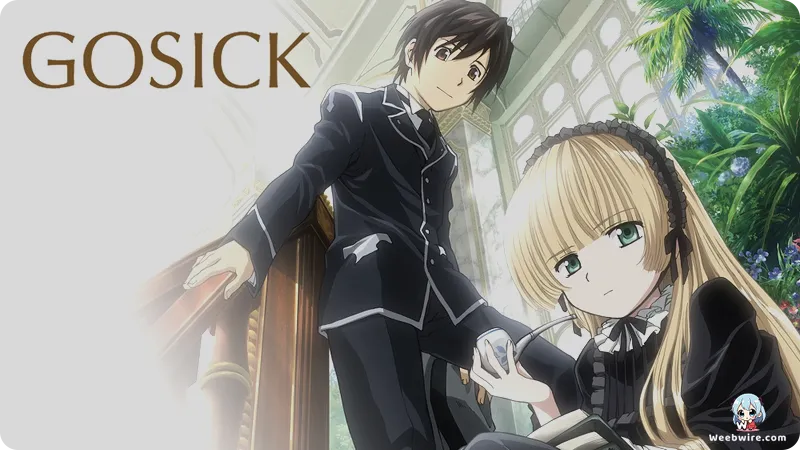The Golden Fairy and the Black Reaper: Unveiling the Hidden Production Secrets That Defined the Gothic Mystery Anime Gosick

Thematic Depth and Symbolic Nicknames
The beloved 2011 mystery anime, Gosick, stands as a landmark adaptation from Studio Bones, bringing Kazuki Sakuraba’s compelling light novel series to life. The narrative follows the unlikely partnership between Japanese exchange student Kazuya Kujo and the genius, secluded detective Victorique de Blois at Saint Marguerite Academy in the fictional European kingdom of Saubure. While widely appreciated for its period suspense and budding romance, the series is layered with sophisticated production choices and thematic trivia often missed by casual viewers.
Central to the story's depth are the contrasting and symbolic nicknames assigned to the protagonists. Kazuya Kujo is immediately burdened with the title 'Black Reaper' (Kuroi Shinigami). This ominous moniker, circulated among the superstitious students, stems from a cultural misinterpretation: Kazuya’s foreign heritage and dark features were linked to a Japanese belief that travelers arriving during the spring thaw bring misfortune. This immediate isolation underscores the anime's subtle commentary on xenophobia and the pervasive influence of myth.
In stark opposition, Victorique is known as the 'Golden Fairy.' Her striking blonde hair, unparalleled intellect, and isolated existence within the library tower project an aura of magical rarity. This deliberate juxtaposition of the 'Black Reaper' and the 'Golden Fairy' establishes a powerful visual conflict that defines their journey toward mutual trust.
Character Design and Deductive Methods
Victorique’s character design pays homage to classic detective fiction. Her method of deduction, the 'Wellspring of Wisdom,' functions as an elevated, spiritual analogue to the 'mind palace' concept popularized by figures like Sherlock Holmes. Furthermore, original illustrator Hinata Takeda intentionally emphasized Victorique’s doll-like fragility, contrasting her physical frailty with her immense mental acuity.
Studio Bones meticulously translated Takeda’s intricate illustrations, which are characterized by detailed gothic fashion and delicate features. This ensured the oppressive yet stunning visual atmosphere of Saubure was faithfully rendered.

Successful Adaptation Timing and World Building
A notable factor contributing to the series’ success was its unique production timing. Unlike many adaptations that outpace their source material, the main Gosick light novel series concluded its run around the time of the 2011 anime broadcast. This crucial synchronicity allowed Studio Bones to adapt the entire primary narrative arc, guaranteeing a complete, canonical, and emotionally satisfying resolution. This comprehensive approach remains a rarity in the world of light novel anime adaptations.
The detailed world of Saubure is also a testament to the production’s commitment to immersion. Although fictional, Saubure draws heavily on real-world Central European influences, with linguistic roots suggesting French and German origins. This reflects the geopolitical tensions pertinent to the story's later stages. The production design team rigorously incorporated Belle Époque and Art Nouveau aesthetics from 1920s Europe into the architecture of Saint Marguerite Academy, public spaces, and period transport, grounding Victorique’s supernatural-seeming deductions in a tangible historical reality.
The Impact of Voice Performance
Finally, Aoi Yuki’s acclaimed voice performance as Victorique was paramount. She masterfully balanced the detective’s childlike petulance and intimidating intellectual maturity, delivering complex deductions with clarity while maintaining the emotional depth required for her dynamic relationship with Kazuya. These combined elements solidify Gosick's status as a unique blend of gothic mystery, historical drama, and enduring romance.
Credits
Gosick
Author
Kazuki Sakuraba
Cover Art
Hinata Takeda
Studio
Bones
Publisher
Fujimi Shobo
Producers





